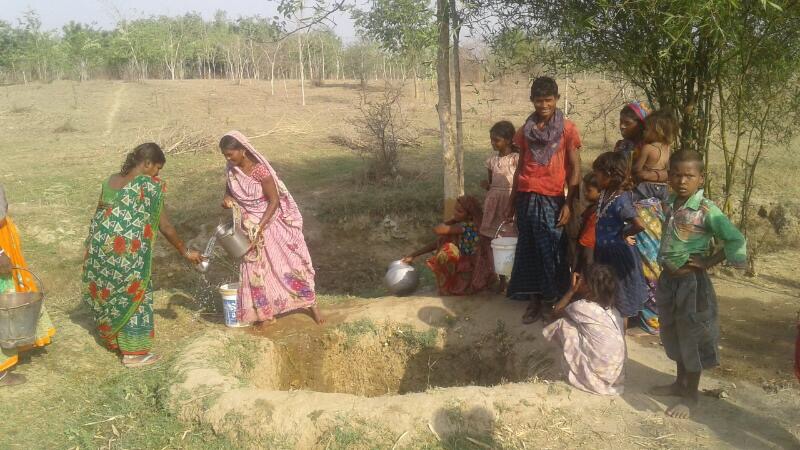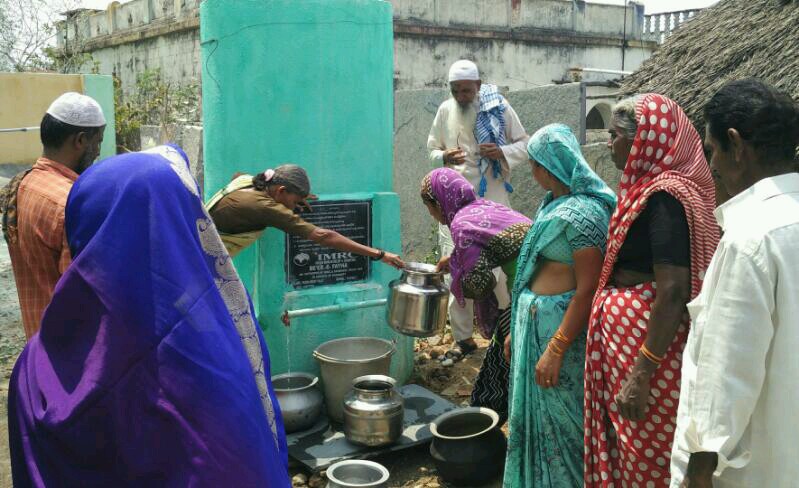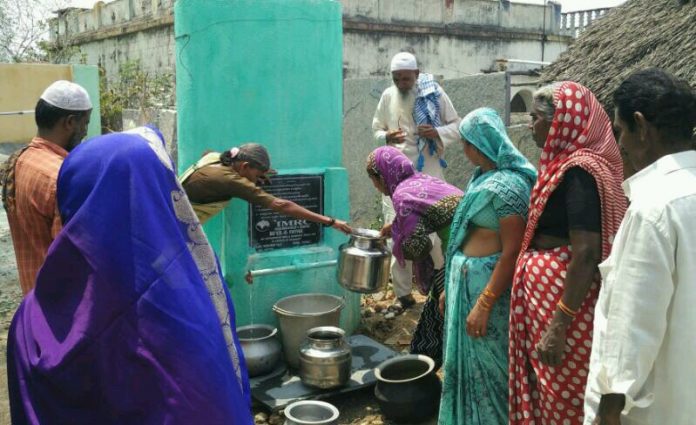By Raqib Hameed Naik, Twocircles.net
Although the summer season has just started in India, droughts and a shortage of drinking water have surfaced all over the country and has left almost one-third of the country’s population exposed.
The water crisis is prevalent in almost each and every part of India and is said to be the worst in the last few decades leaving more than 33 crore people suffering.

Take the case of village Gordhia in Chatra district of Jharkhand, where people mostly work as labourers and peasants. Most of the people living in the village are below poverty line and government schemes on water barely reach these far off villages. Even if these schemes reach the villages, their implementation is poor.
According to Shamsuddin Mia, 50, a Rickshaw driver from village Ghordhia, the 170 families living in the village have to face a very hard time to get even one Ghagar (clay pot) of water.

“The heat has dried the water resources and the whole population has to rely on a stream, which is polluted and the water isn’t fit for drinking. Even to get a single pot of unpolluted water, we have to walk for more than a mile,” said Shamsuddin Mia.
For Salam Ansari, 35 also from Gordhia who works as a peasant, arranging drinkable water for 10 members of his family is a challenge. Every day, after coming back from work, exhausted, he has to take three to five trips on foot to fetch water from the stream which is at distance of more than 1 mile from his mud house.

Across the border of Jharkhand state in Bihar, Akhilesh Prajapt, 55 from Village Siba in Gaya district has a similar story to share. He also works as a labourer and the village has been witnessing water scarcity since last three years.
“We do have wells here, but few and they are also polluted. People are left to drink water from unclean sources. There is a river which is the sole source of drinkable water. Sometimes there is a fight among villages and people over water. This is how bad the condition of people is here,” said 55-year-old Akhilesh.

According to Najeeb Ahmed, a volunteer of Hyderabad-based Sahayata Trust in Bihar and Jharkhand, which helps people in these villages by installing hands pumps and bore wells, “Most of the villagers work as labourers and installing a hand pump requires digging deep in the ground up to 275 to 300 feet. Besides, the ring boring requires almost Rs 40,000 and hand boring requires at least Rs 16,000, which these poor villagers can’t afford, so they end up drinking water from unsafe sources.”
According to a report by the National Aeronautics and Space Administration (NASA), based on the satellite images, there has been a sharp decrease in groundwater levels under northern India’s irrigated fields of wheat, rice and barley. The response of people by drilling wells deeper in the ground as water levels fell has made the problem worse.

The situation is no different in other parts of India.The water scarcity is also rampant in various states. The debilitating drought has entered its fourth successive year in Marathwada region of Maharashtra.
Marathwada is one of the five regions in Maharashtra containing eight districts, reeling under severe drought since last three years and is the most water-deprived region of Maharashtra. The rivers, canals, ponds and nallas have dried up. The poor population is forced to buy water at inflated prices from ‘water mafia’. The failing crops have forced farmers to attempt suicides.
Similarly, in Kammimpet village of Vellore district in Tamil Nadu, Beedi workers earning barely Rs 100 a day have a very hard time to fetch drinking water. Every day they have to undergo on a journey for miles in agricultural lands fitted with bore wells to fill their water pots.

“There are pumps but there is no water in them. The bore wells on agricultural lands are few and people who need water are more. Sometimes, people get into fights over water and it is all at the discretion of borewell owner whom to give water or not,” said, Takbeer Shabeer, a Beedi worker.
The case of Chittor district in Andhra Pradesh is no different. In Tileru Constituency of the district, there are 986 ponds and 880 out of them have dried up due to heat. These ponds used to serve as a source of drinkable water for more than 1000 villages.
“We have to walk on foot for more than a mile to get drinking water from the bore and it too depends on electricity. Usually, electricity stays for 7 hours and bore wells run on it. Some are able to get water within in this time and people who work as labourers are left in a tight spot, because they are at their workplaces at that time,” said Sri Rayadu, 48 from Kadapa district.

Sometimes, few households come together and contribute towards buying few thousand litres of water from water tankers, which costs them Rs 500-700.
With slim chances of any respite before the monsoon, water crisis looms large over India, and this has once put again put the millions of people living below poverty line spread across slums and different villages across the country at risk.


